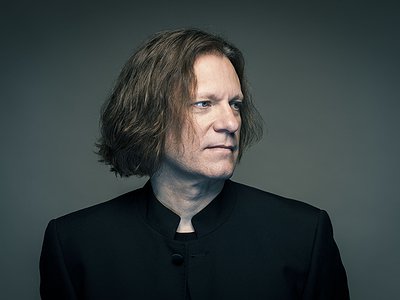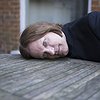Could you take us through a day in your life, from a possible morning routine through to your work? Do you have a fixed schedule? How do music and other aspects of your life feed back into each other - do you separate them or instead try to make them blend seamlessly?
I don’t have a rigid routine. For me, there are two types of creativity: fast and slow. The spontaneous, explosive side, where I’m generating ideas quickly; and the refining, organising side, where I slowly make it fit together into a satisfying whole. It’s important to know whether, at any moment, you need to be in fast mode or slow mode.
As for the relationship between art and life … Every musician’s work is a kind of sonic autobiography. But we also need dreams, fantasy, escape, transcendence. Otherwise our music would be simply the endless confirmation of our earthbound wretchedness, as we trample over the pizza boxes on the bedroom floor.
Could you describe your creative process on the basis of a piece or album that's particularly dear to you, please? Where did the ideas come from, how were they transformed in your mind, what did you start with and how do you refine these beginnings into the finished work of art?
On “STET”, there’s a tune called “Prayer Wheels”. I started with a set of triangles which I wanted to permute into a kind of moiré pattern. I realised I needed to give each triangle a rhythmic position based on prime numbers; that way no two triangles would ever sound at the same time. That in turn opened up a wider approach to the piece: of a slower pulse which was rigid, against a faster pulse which was flexible. If this sounds like it’s just a forebrain throb, with no room for the heart, it really wasn’t. All the time I was playing piano and celesta against the triangles, making sure the track had the right amount of “give” to yield to the lyrical, melodic elements I wanted to introduce. Another concern was, I didn’t want this piece to have a straight verse-chorus form, but I still wanted it to have incomplete hints of that, of a song’s feeling of return. Originally I just called it “Triangles”. But I remembered seeing prayer wheels in Nepal, and I loved the image of rotating machines which seemingly pray automatically, on the supplicant’s behalf.
There are many descriptions of the ideal state of mind for being creative. What is it like for you? What supports this ideal state of mind and what are distractions? Are there strategies to enter into this state more easily?
I’m often more creative when I’m distracted. It’s as if not having any musical equipment, and being away from my familiar work environment, frees my imagination. The outline of the first piece on STET - “Sing” - came to me when I was visiting a synagogue in Ukraine. I heard everything except the notes; the expansion out from a single point, through to the final resolution. So I jotted the basic idea down in a notebook, knowing I could work out the details later.
“Memento For D” and “Mono No Aware” were written in a cottage in Dungeness, where, again, there was basically no musical equipment. They worked outwards from a melodic fragment or a chord progression, rather than inwards from a large-scale gesture. Most of the time, that’s how I write.
How is playing live and writing music in the studio connected? What do you achieve and draw from each experience personally? How do you see the relationship between improvisation and composition in this regard?
I imagine the best live concert being as moment-to-moment unpredictable as a Cecil Taylor free jazz improvisation; and the best studio recording being as detailed, planned and perfect as a Miyazaki stop-frame animation. Again, it’s fast mode versus slow mode.
In practice, things can’t really be like that: It would mean studio and live work presenting two unconnected repertoires. Having performed live with both Björk and Imogen Heap, I’ll say this at least: it’s usually the music that seems ridiculous to even try and perform live which works out the best live. Impossibility is oddly liberating. As E.E. Cummings says: “only the truest things always are true because they can't be true”.
Imogen likes a concert to feel like an intimate party among friends; it’s as if she’s invited you round for dinner personally. I don’t know another artist who does that better. If I get to gig on my own terms, with any kind of production budget, I’d like to try a very different approach. I’d like the audience to feel like they’ve accidentally gatecrashed on a mysterious religious ritual of an extraterrestrial civilisation.
How do you see the relationship between the 'sound' aspects of music and the 'composition' aspects? How do you work with sound and timbre to meet certain production ideas and in which way can certain sounds already take on compositional qualities?
There’s give and take. An intriguing chord progression may need a steadier, blander timbre if you want it to support a vocal clearly. Playing it on that ululating cephalopod sound you just created might be fun but futile. On the other hand, a strange, unique timbre may be wasted if it’s buried in a dense arrangement already filled up with more conventional timbres.
On “Khöömei”, I sampled every note of a celesta, then retuned it into just intonation; then I put it through a ring modulator. At that point, I knew I shouldn’t feature any extra instruments. If I did, they’d only obstruct the view of this incredibly specific, characterful sound.
Our sense of hearing shares intriguing connections to other senses. From your experience, what are some of the most inspiring overlaps between different senses - and what do they tell us about the way our senses work? What happens to sound at its outermost borders?
I like to think of myself as a musical colourist. It’s good to experience the visual arts and learn from them. Chiaroscuro is a wonderful concept. I think about it a lot when mixing.
I’m also inspired by analogies between the frequency spectra of light and sound. Bright FM sounds are ultraviolet, while deep subs infrared. I love Metasynth, which creates sounds directly from visual images.
Art can be a purpose in its own right, but it can also directly feed back into everyday life, take on a social and political role and lead to more engagement. Can you describe your approach to art and being an artist?
Music can be political, and have political themes. But I wouldn’t want it to dither down to politics, to be subsumed by politics.
It is remarkable, in a way, that we have arrived in the 21st century with the basic concept of music still intact. Do you have a vision of music, an idea of what music could be beyond its current form?
The broad idea of music as human-organised noise has been around since at least the neolithic era. But the advent of recording technology has radically re-wired our perception (read Evan Eisenberg’s book, “The Recording Angel”, to find out more). We’re now completely unfazed by music which never caused sound waves to travel through air until it reached loudspeakers. Some of it never even had a human performer at any stage. We have great artists like Aphex Twin, who are, in a sense, non-real-time virtuosi. It’s fascinating to see how these developments will play out.
If humans start to live in completely novel environments (e.g. on a Bernal sphere, or at the bottom of the ocean), that’s bound to change our feeling for music.



